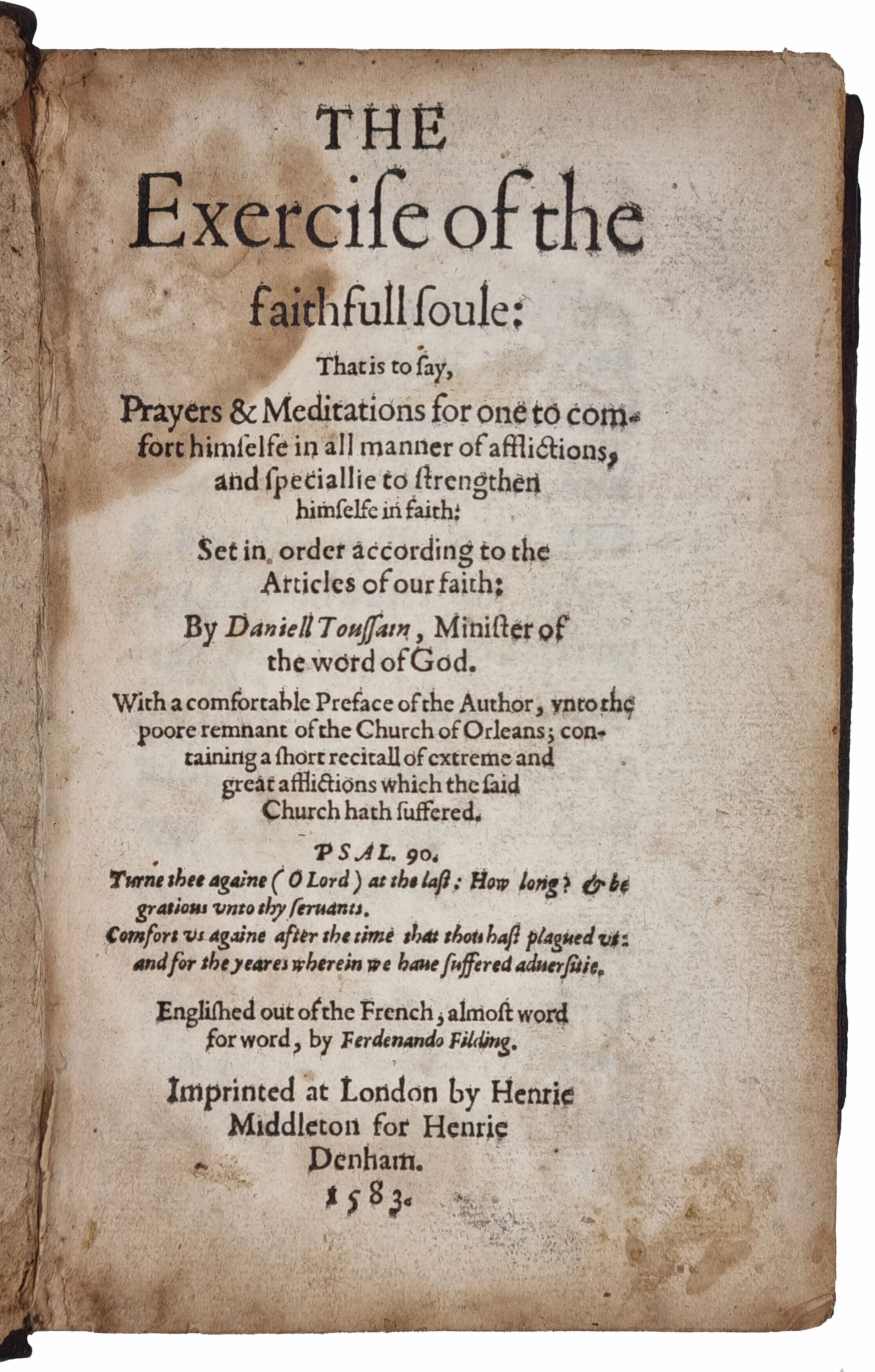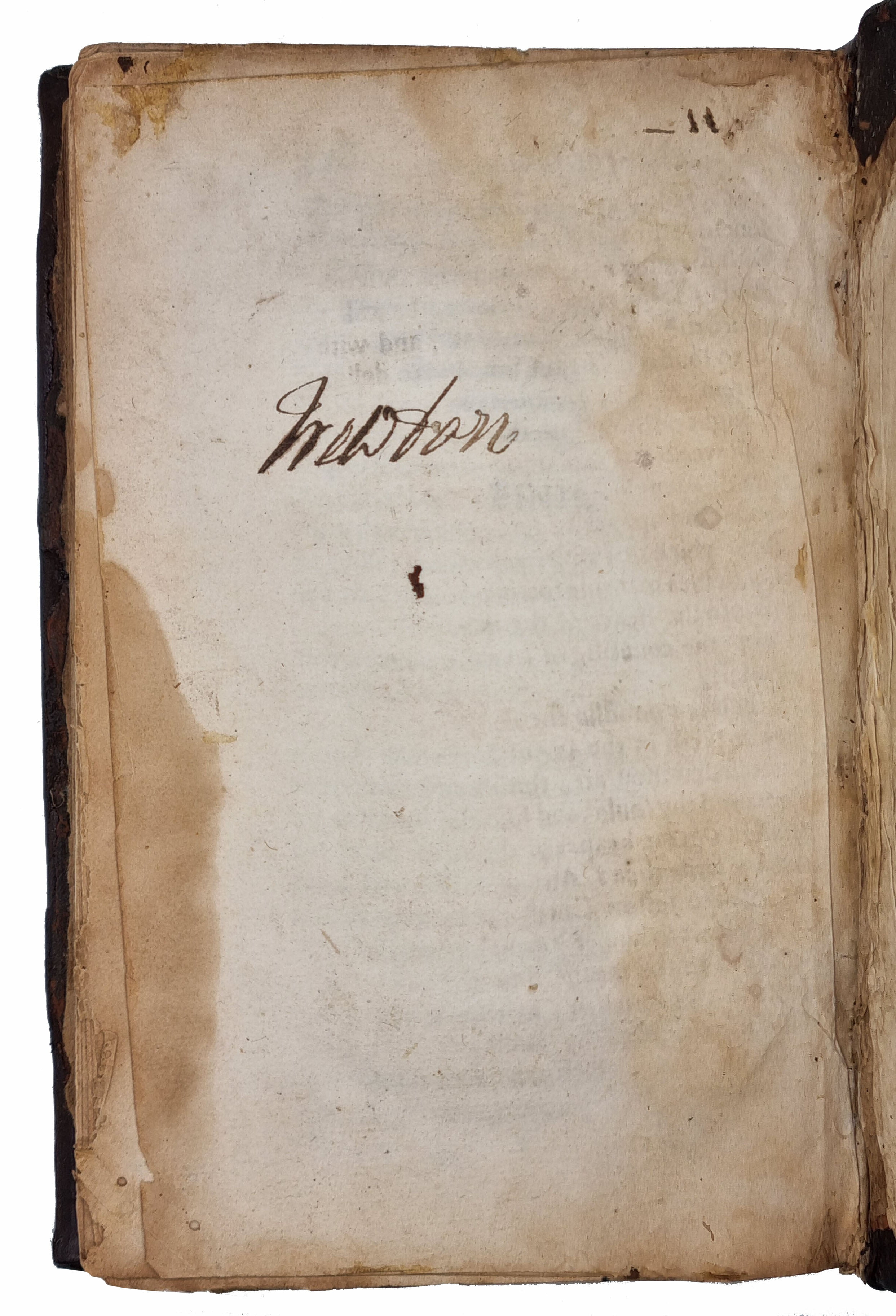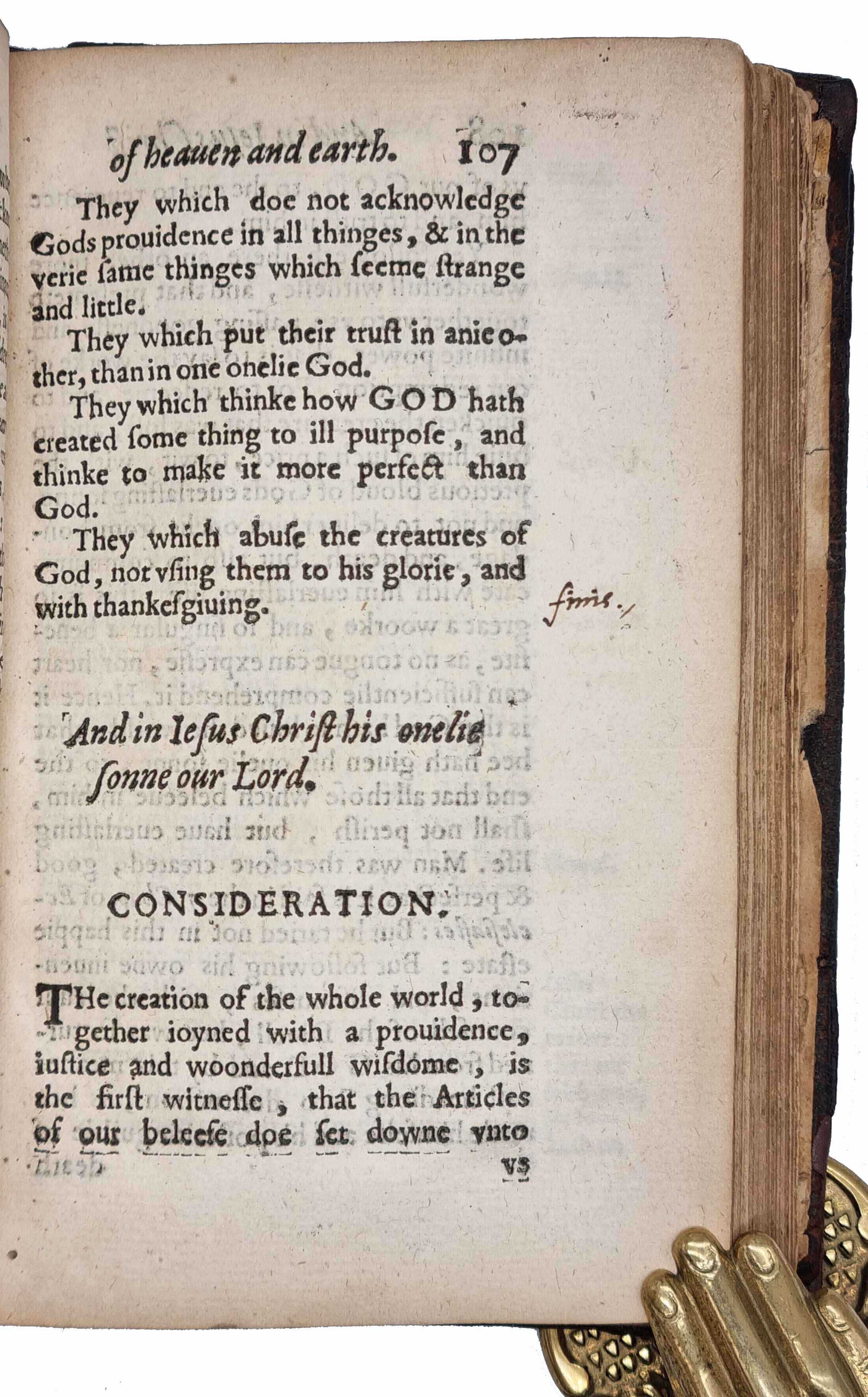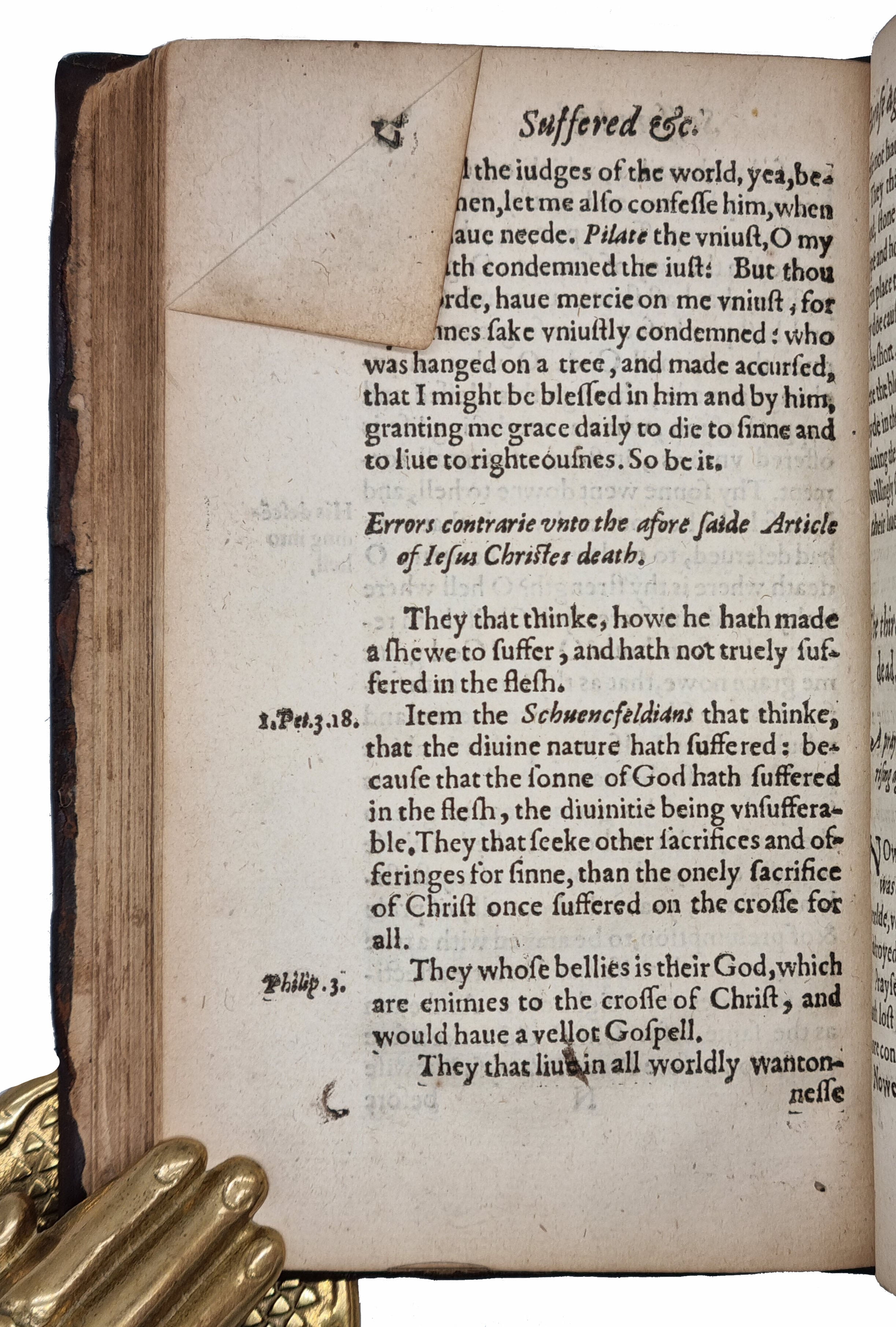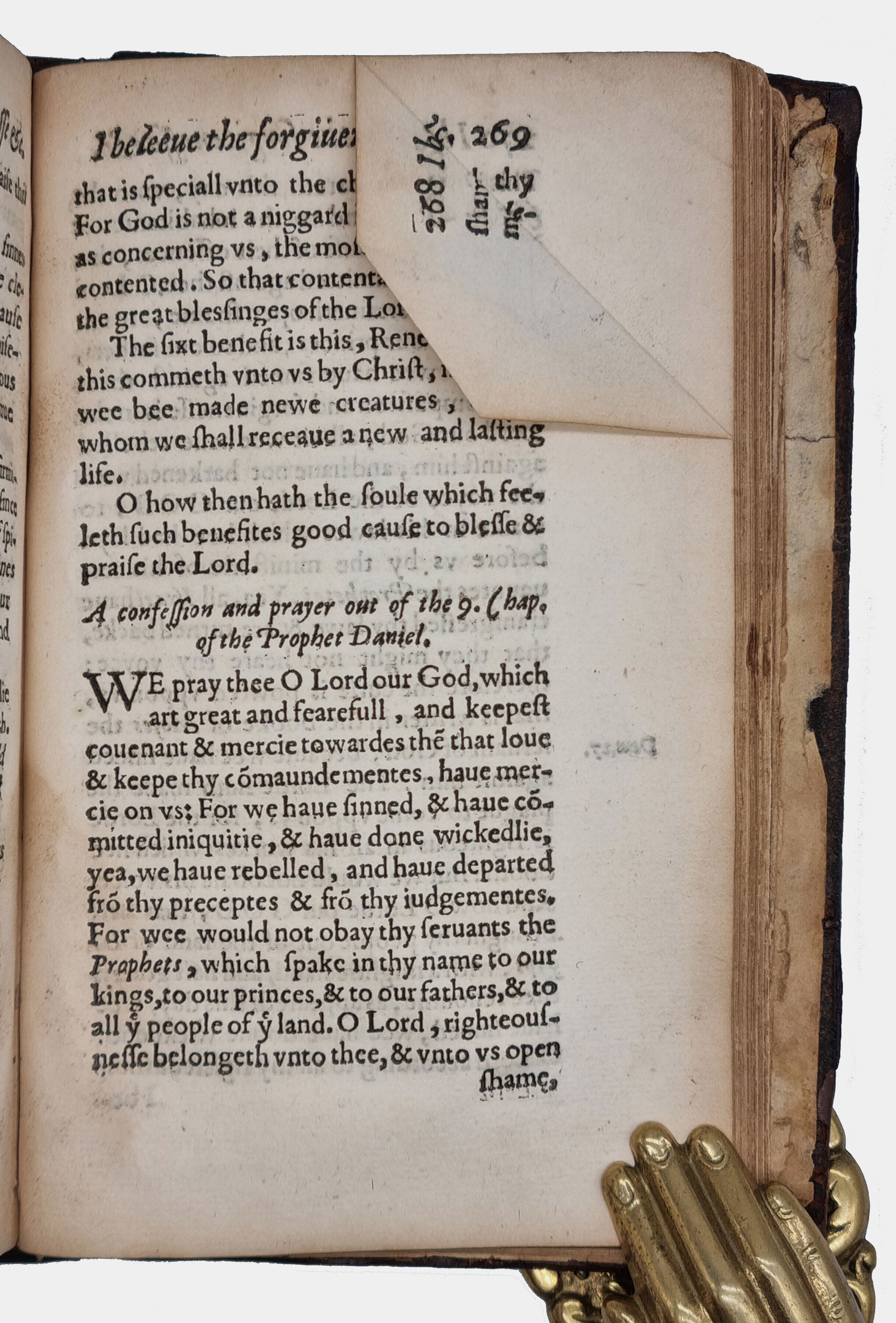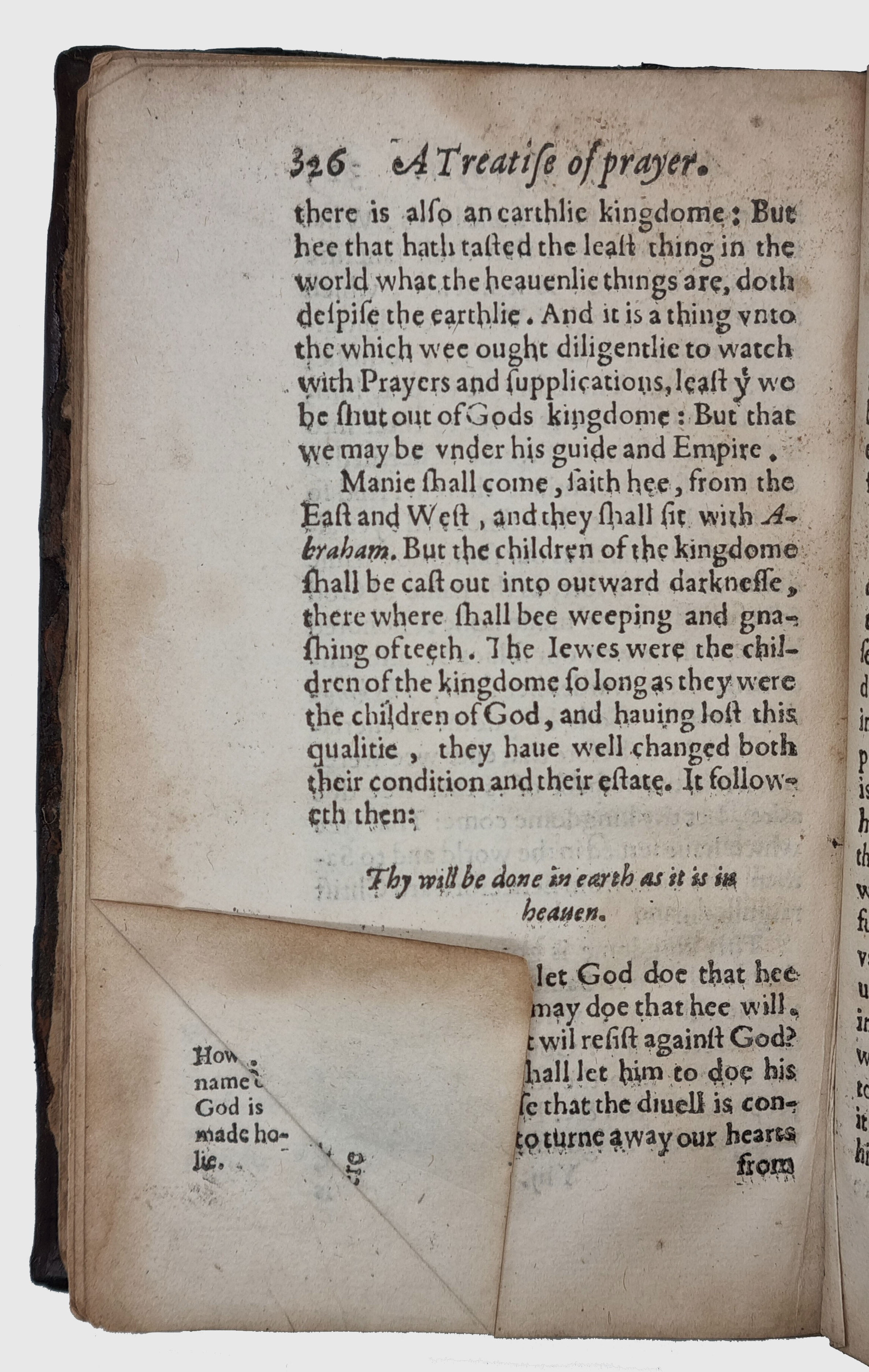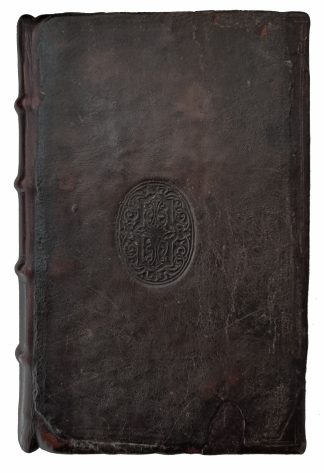TOUSSAIN, Daniel.
RARE
The exercise of the faithfull soule:
London, By Henrie Middleton for Henrie Denham, 1583£7,500.00
FIRST EDITION thus. 8vo. pp. [lvi], 338: [*]⁴, [par]-3[par]⁸, B-Y⁸, Z². Issue with line 6 of title reading ‘manner’. Roman Letter, some Italic. Floriated woodcut initials, typographical headpieces, ‘Newton’ in a C17th hand on verso of last blank, many leaves with corners folded, ms. sum on pastedown calculating the age of the book in the year 1792. Age yellowing, title a little dusty, stain at gutter and first few leaves, and at fore-edge margin of last few, lower blank corner of two quires a little chewed, tiny single wormhole at blank gutter on one quire, rare marginal marks or stains. A good copy in contemporary English dark calf, covers bordered with a triple blind rule, blind arabesque at centres, rebacked, a little rubbed and worn, a.e.r.
Rare first edition of this English translation of Daniel Toussain’s, ‘L’exercice de l’âme fidele, assavoir prieres et meditations pour se consoler en toutes sortes d’afflictions.’. Newton’s library of nearly 2000 volumes remained virtually intact until 1920, when more than half the volumes were sold. John Harrison was therefore obliged to use three manuscripts sources to to reconstruct the library of Newton in his modern recension ‘The library of Isaac Newton’ 1978, which contains a catalogue of Newton’s books. These were firstly, the inventory of Newton’s belongings made at his death, secondly a list made by Huggins, established a few months after his death (BL ms. Add. 25, 424), and a catalogue, dating from 1766-1767 made by Musgrave (Trinity College no. 17.36.) This work does not feature on the list made by Harrison. However a curious feature is that several pages have their corners folded, either up or down, in order to point to passages of the text, which is consistent with Newton’s own particular usage; “Evidence of Newton’s use is provided by annotations or dog-earing (which are described in some detail wherever they occur), by references or citations in the manuscripts, and/or by subsequent research which has otherwise demonstrated or suggested his use of a particular source. While it is possible that some dog-earing was the work of subsequent owners, it is evident from the fact that most instances of it point quite precisely to passages of demonstrable importance to Newton that the vast majority is his own. He used dog-ears not merely to mark pages but to align the page corners with specific passages of interest (hence the fact that pages may have their corners turned down, up, or both): see Harrison, 25-7 for a more detailed account.” Cambridge, The Newton Project, ’About Newton’s Library.’ It could be therefore that the ms ‘Newton’ is an independent early record or attribution of a very distinguished provenance.
This work of Protestant piety is remarkable for containing an important account of the Reformed church at Orleans, where Toussain (or Toussaint) was a Pasteur, and particularly of the St. Bartholomew’s Day Massacre that occurred there. “We also possess an exceptionally evocative overview of the fate of its reformed Church in the prefaces to two devotional writings written later in the century by its minister from 1562 to 1572, Daniel Toussaint. In the first years of the Reformation, Toussaint recalled, God has seem to bless his faithful in the city. During the first Civil War, just as Orleans was besieged by the Catholics and threatened with capture and sack, peace was negotiated.. But tribulations rained down after the Royal troops came in 1568. Acts of violence against the Protestants multiplied. It took a year for them to re-establish the church following the peace of Saint-Germain, during which time they ‘were daily threatened, beaten robbed and .. let and hindered .. to enjoy the greatest part of their goods.’ The local reenactment of the Saint Bartholomew’s massacre of 1572 was the final blow. The ‘greatest part of the church was slaughtered and many others fell away from the faith, so ‘that it seemesth, there is no trace or path of a Church left, or that ever there had been anie reformation’” Thomas Brady ‘A Handbook of European History 1400-1600: …’
ESTC records two issues of the first edition, both rare, with this issue the rarer with two copies only, at the BL and Bodleian. ESTC S95555. STC 24144.5.In stock



